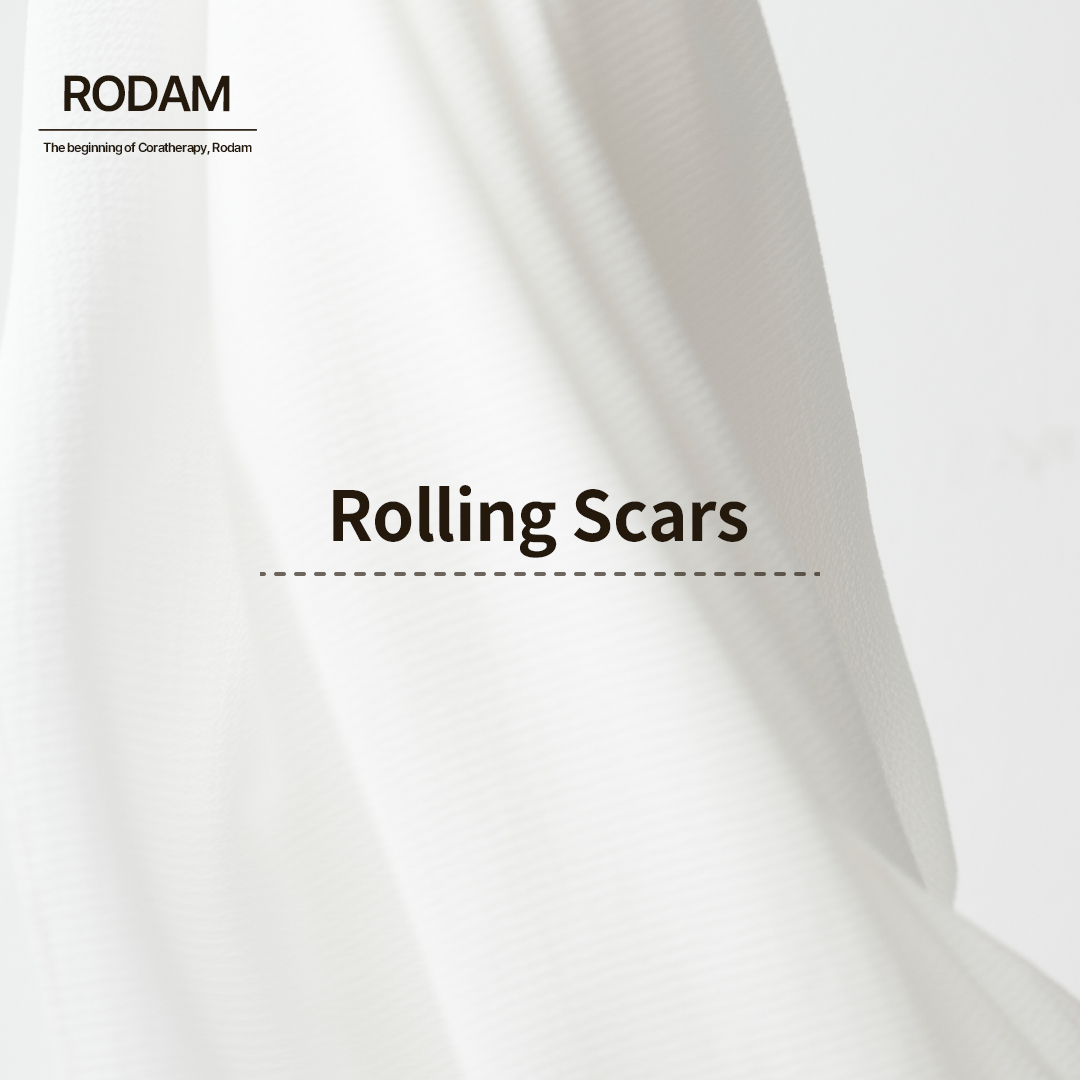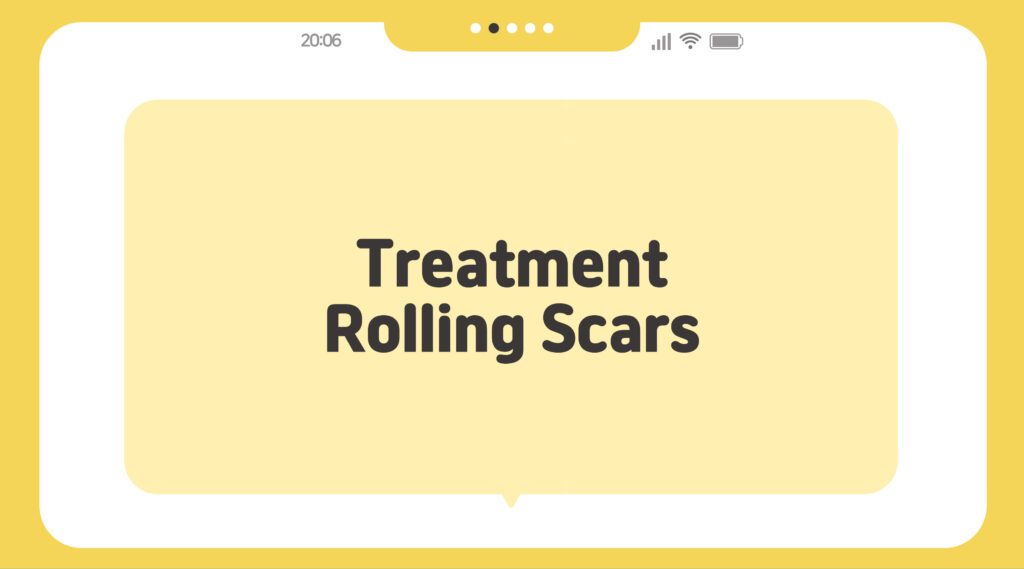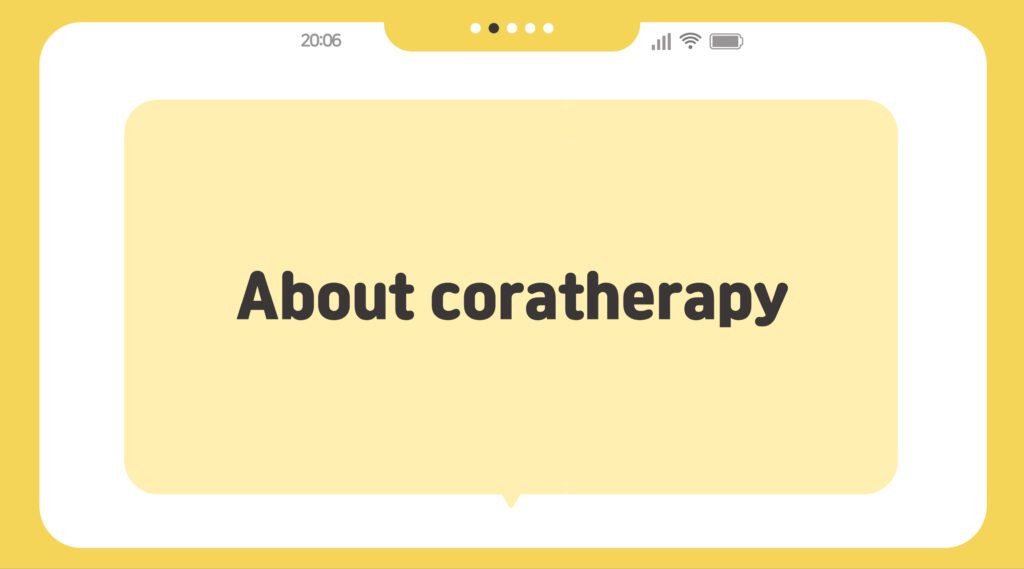
Rolling scars refer to acne pitted scars, and Coratherapy treatment at Rodam Korean Medicine Clinic.
Hello, this is Rodam Korean Medicine Clinic, the beginning of Coratherapy for scar removal.
Acne itself can be stressful, but even after it heals, it often leaves behind another concern: acne scars.
In particular, rolling scars, which appear as uneven depressions on the skin, disrupt the skin’s texture and become more noticeable depending on the angle of light.
These scars are difficult to completely cover with makeup, leading to ongoing stress about appearance,
and they can affect self-esteem and interpersonal relationships, making it more than just a cosmetic issue.
Acne scars are caused by skin damage from severe acne or improper care,
and they appear in various forms such as ice pick, boxcar, and rolling scars.
Among these, rolling scars are characterized by broad, shallow depressions with uneven surfaces,
requiring a delicate approach for treatment.
In this article, we will explore the causes and characteristics of rolling scars
and discuss Coratherapy, an effective treatment method for improving these scars, in detail.

What are Rolling Scars?

Rolling scars are a type of acne scar
where the skin surface appears broadly depressed and uneven.
Typically, the edges of the scars are not sharply defined and transition smoothly,
with the width of the scars being more prominent than their depth.
These scars, which spread in curved patterns, create an uneven skin texture and
become more noticeable under light due to shadowing,
causing many people to feel stressed about their appearance.
Rolling scars occur when inflammatory acne damages the dermis layer of the skin,
and during the healing process, collagen fails to regenerate evenly.
Additionally, rolling scars cause less damage to the epidermis compared to other scars,
but fibrosis in the dermis layer reduces skin elasticity,
and impaired blood circulation can make the skin appear more sunken.
Because rolling scars are shallow but widely spread with indistinct boundaries,
it is challenging to determine the exact area that needs to be filled, making them difficult to treat.
Treatment for Rolling Scars

Treatment for rolling scars generally involves a three-step process.
Step 1: Adhesion Tissue Release
The first step is to release the adhesion tissue beneath the skin that pulls on the scars.
This process allows the compressed areas of the skin to naturally lift,
resolving the pulling effect beneath the skin that is a primary cause of the scars.
In other words, it separates the depressed areas beneath the skin,
helping the surface to recover more evenly, making this a crucial step.
Step 2: Collagen Regeneration Stimulation
After releasing the adhesion, the next step is to promote the recovery of damaged skin tissue
by inducing collagen production.
This stage involves providing micro-stimulation to the skin
to encourage new collagen generation.
Specialized treatments such as lasers or Coratherapy are effectively utilized during this step.
Step 3: Dermis Layer Strengthening
The final step focuses on restoring the fundamental structure of the skin.
Since rolling scars result from dermis layer loss,
treatments using internal regenerative substances or external medications
are necessary to ensure sufficient production of skin-regenerating components like collagen and elastin.
This process enhances skin elasticity and promotes stable recovery of the scarred areas.
This three-step treatment is generally carried out
in the order of ‘subcision → laser → medication (e.g., Juvelook).’
However, there is a treatment method that integrates all these processes.
This is Coratherapy, a scar treatment conducted in Korean Medicine Clinics.
Coratherapy combines adhesion release, collagen regeneration, and dermis strengthening
into a single, efficient, and systematic treatment process.

Since 2006, Rodam Korean Medicine Clinic has been offering Coratherapy,
a treatment using specially designed needles.
This treatment simultaneously releases adhesions and stimulates the dermis layer
to encourage the regeneration of substances that fill the scars.
Coratherapy uses specially designed needles.
Unlike simple straight needles, it employs ‘L-shaped’ incision needles,
allowing precise stimulation of the scars, which helps blend them more naturally with the surrounding healthy skin.
Additionally, the treatment promotes the growth of new skin,
ensuring that the recovered scars do not sink again.
Acne scars caused by acne cannot be sufficiently improved with surface-level care alone.
Coratherapy, which stimulates the dermis layer to induce skin regeneration,
is most effective when combined with extensive clinical experience and the delicate touch of a skilled Doctor.
If you are struggling with acne scars, feel free to reach out to us anytime.
With 20 years of experience in treating depressed scars, Rodam Korean Medicine Clinic listens sincerely to your skin concerns
and will always be by your side. Thank you.

